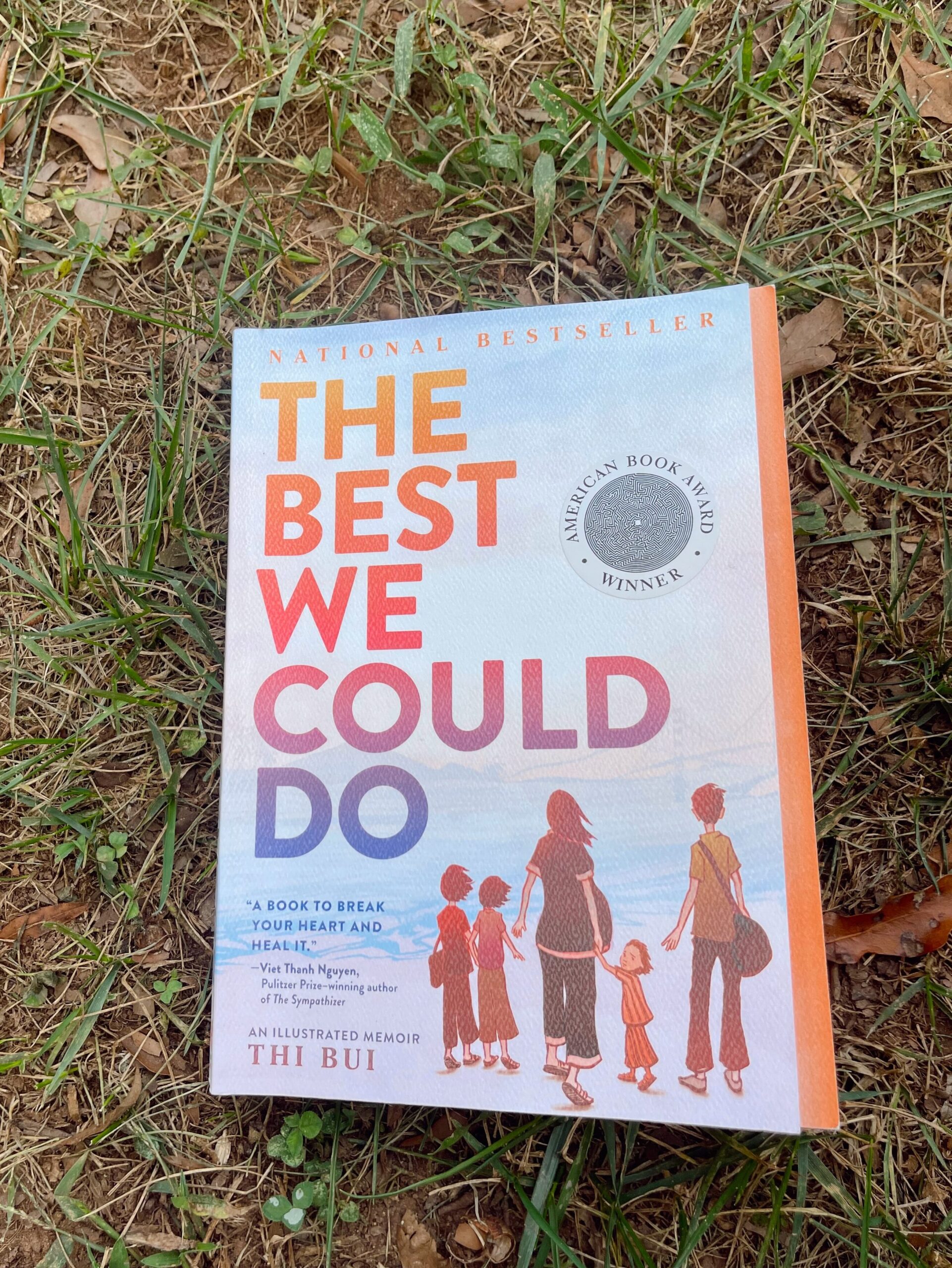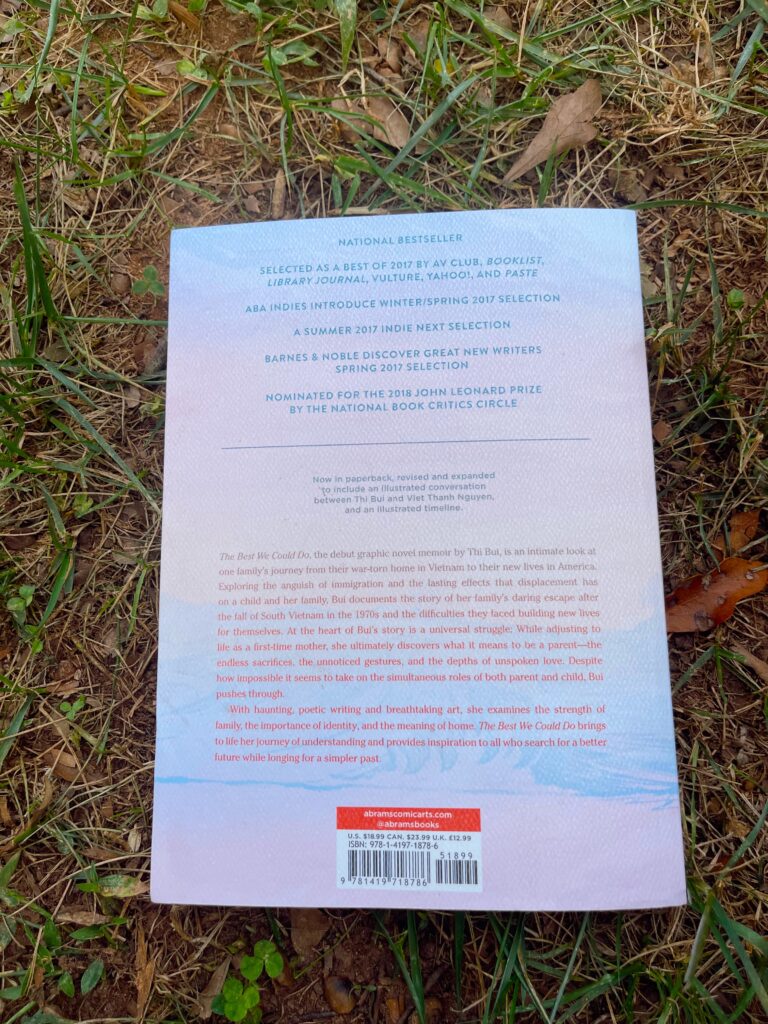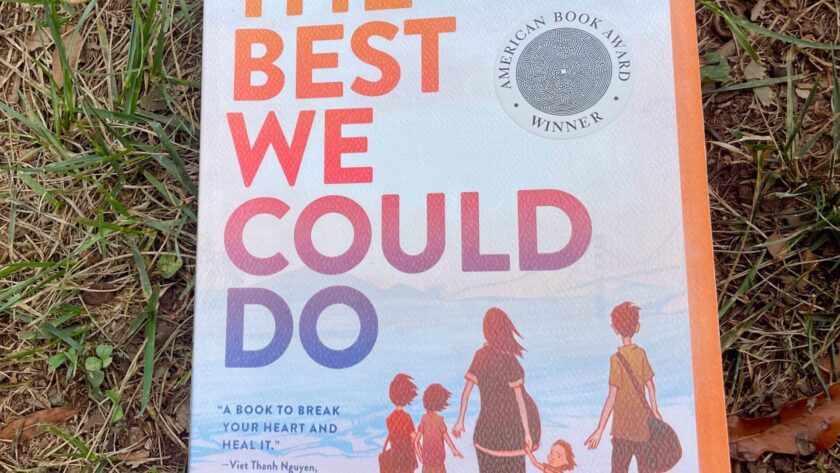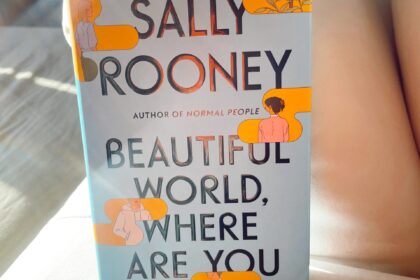I miss picture books.
I don’t know who decided that people graduate from picture books to “mature books” with only text, but I would love the opportunity to have a word with them.
While reading The Best We Could Do over the past week, I was reminded of the pure joy, spontaneous creativity, and profound introspection that illustrations can inspire when accompanying text. Together, illustrations and text combine their singular meanings to create a third, more complete, meaning.
The Best We Could Do is a graphic memoir written and illustrated by Thi Bui, who previously taught high school and more recently established Oakland International School, the first public high school in California for recent immigrants and English learners.
Thi Bui’s The Best We Could Do was, in its origin, quite a different creation. She began this project in graduate school, over ten years before its eventual publication in 2018, and it began as an oral history project. In the oral history form, Bui was attempting to capture a more nuanced version of the Vietnamese-American experience, determined to avoid falling into cliche pitfalls.
In an interview, Bui remembers that in this form, she did a lot of listening to other people, but she did little speaking for herself, her family, and her story.
She admits that form was easier for her, as it did not force her to touch the intimate, complex history of her family. It’s so much easier to talk about other people! The decision to transition to the graphic memoir form was one made in the interest of accessibility, and she realized that while few would read a Vietnamese oral history, many would read a story with three dimensional, real characters at the foreground and Vietnamese History as the background.

So here I am, ten years later, reading the project that was once viewed as inaccessible. And I am feeling joy, and I am reconnecting with my inner child, and I am learning. Thi Bui’s memoir accomplishes all of these goals, and so many more.
The Best We Could Do is a memoir centered on people, and it never lets the reader lose sight of the complex humanity of its characters. People, specifically Bui’s family, take center stage, and as we grow to love the characters, we become naturally curious about what is happening in the world around them. It’s like she tricks us into learning history! Genius!
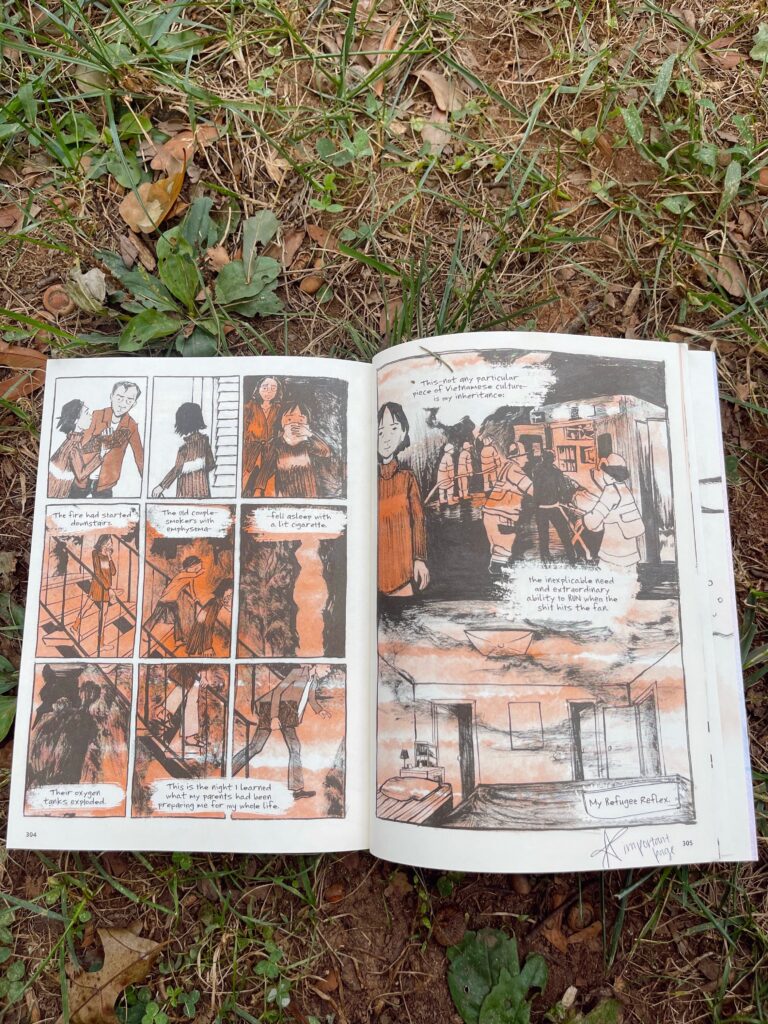
The Best We Could Do conveys Vietnamese history in a new light – a light not tainted by American stereotypes, American ideas of benevolence, or American racism. It portrays Vietnamese History as the rich, complex, dynamic story that it is. It covers an immense breadth of history: The Second World War, the Chinese invasion of French Indochina, the bombing of Hiroshima and Nagasaki, the Independence of Vietnam under the Việt Minh, The First Indochina War, the Tết Offensive, The Vietnam War, the misleading “Saigon Execution” photograph, and the eventual defeat of South Vietnam.
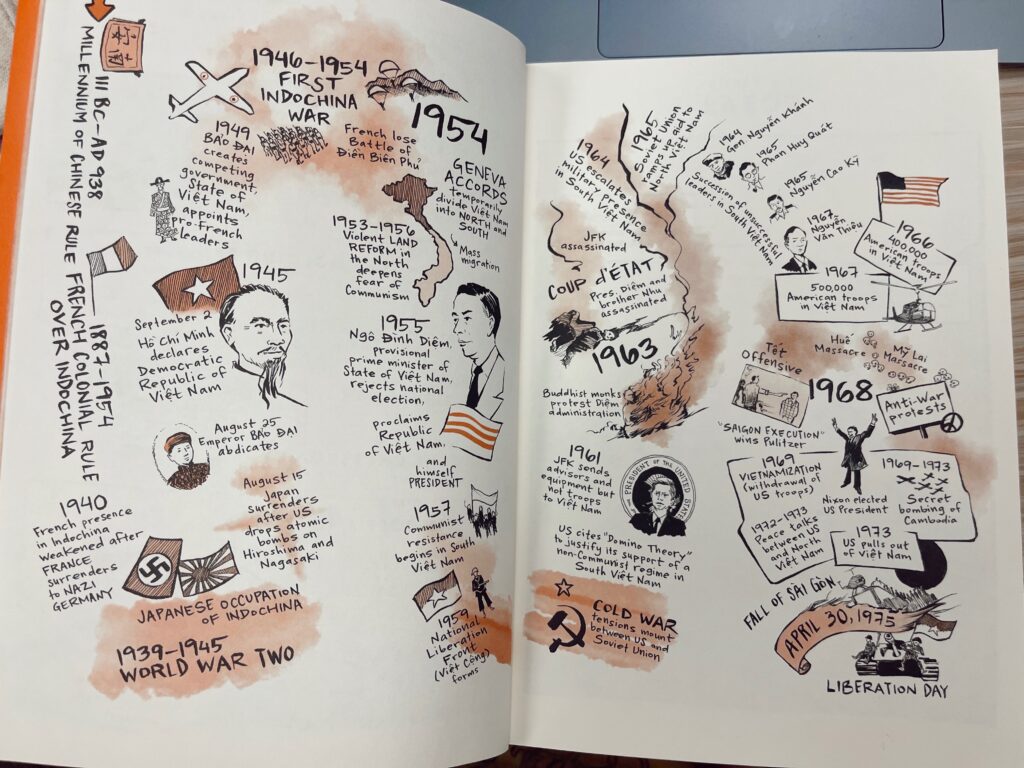
The history, despite being dense events full of tragedy, remains accessible and readable, precisely because of the form Bui has chosen. These events occur in the background of the story, while the foreground conveys life, death, education, immigration, heartbreak, and profound love.
The Best We Could Do explores themes of parenthood and childhood (and how they can simultaneously exist), intergenerational trauma, and the meaning of home for Vietnamese-Americans.
In the interview I previously mentioned, Bui describes this novel’s project:
“I had to learn how to take up space.”
This assertion, or mission statement, if you will, captures what The Best We Could Do accomplishes. The Best We Could Do takes up space, and will continue to take up space, in my consciousness for years to come. It called me to think critically about the stories we tell ourselves about American excellence, to analyze the narratives I hold about the Vietnam War, and to think about the way form can assist in the humanization of history.
The pictures, too, really made me happy. Why are there not more picture books for adults? We really need to get on that.
Picture books make reading feel cool again, like I’m once again scoring the most AR points in my third grade class!
